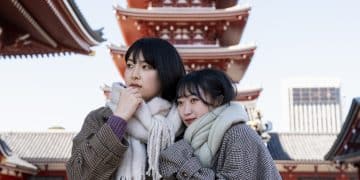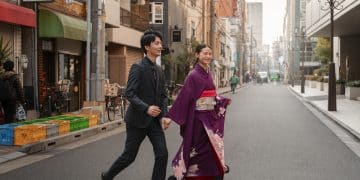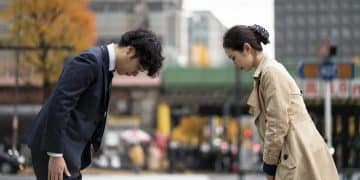Japanese Dorama vs K-Drama: 10 Cultural Differences in Styles
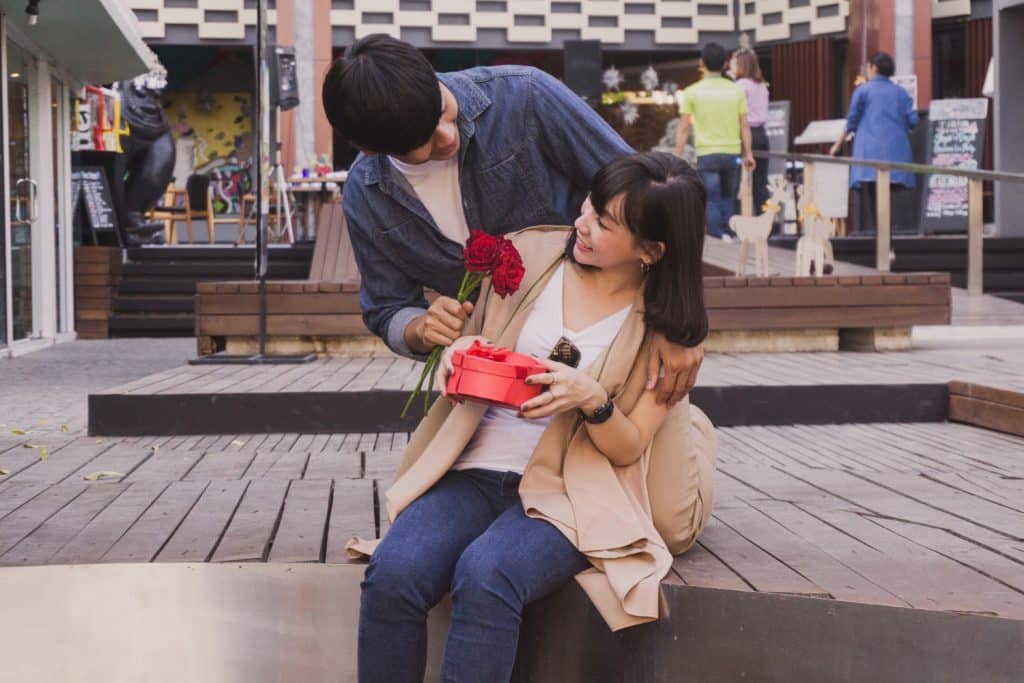
Major Cultural Exports
Japanese Dorama and Korean Drama have become important forces in the world of television. Both offer unique styles of storytelling, acting, and production that set them apart not only from each other but also from Western shows. These series are now recognized as major cultural exports, introducing global audiences to Japanese and Korean culture, norms, and values.
Expanding Global Reach
Asian television entertainment is enjoying a surge in worldwide popularity. Streaming platforms have made it easier than ever for viewers to access shows from both Japan and South Korea. Fans in North America, Europe, and beyond are drawn to the distinct storytelling, emotional depth, and visual flair of these series. This growing interest reflects a broader appetite for diverse content and exposes new audiences to cultural practices and traditions they may not have encountered before.
Purpose and Focus
The goal of this article is to examine the cultural differences between Japanese Dorama and K-Drama. By comparing their production styles, storytelling, characters, and more, we can gain a clearer understanding of what makes each approach distinct. Exploring these differences helps highlight the values and social expectations woven into the fabric of Japanese and Korean entertainment.
This exploration invites us to appreciate how television can reflect and shape cultural identity while opening the door to cross-cultural understanding.
Production Values and Visual Aesthetics
Contrasting Budgets and Visual Ambitions
Korean dramas are widely recognized for their substantial production budgets. This financial investment is evident in everything from elaborate set designs to high-end costumes. Lavish locations, striking cinematography, and slick editing all contribute to a polished, cinematic atmosphere. These elements create an immersive viewing experience that often matches the high standards set by global film and television industries.
Japanese doramas, by contrast, generally operate with more constrained resources. Their production approach is often defined by efficiency and a strong sense of realism. Instead of ornate sets, doramas often feature everyday environments—offices, homes, or suburban streets—that ground stories in relatable settings. Lighting and camera work in dorama aim for subtlety and authenticity rather than spectacle.
Visual Style Reflecting Deeper Values
The glossy, almost dreamlike visual palette of K-Dramas aligns with storytelling that often aspires to escapist fantasy. The heightened presentation resonates with audiences searching for inspiration, hope, and a touch of the extraordinary. In Korean culture, there is a strong emphasis on projecting an ideal image and striving for perfection, which is reflected in these visual choices.
Japanese doramas favor a more understated and grounded look. The everyday aesthetic suggests a comfort with imperfection and a celebration of the ordinary. This reflects broader cultural values in Japan, where sincerity and subtlety are often valued over showiness.
The different visual identities of K-Dramas and doramas go far beyond surface appearance, hinting at the underlying values and aspirations of each culture. These aesthetic choices set the stage for equally distinct approaches to storytelling and pacing.
Storytelling Approaches and Pacing
Narrative Styles
Japanese doramas are well-known for their slice-of-life approach. These stories often draw from everyday experiences, focusing on quiet, meaningful moments rather than grand drama. The narratives emphasize subtle changes in characters’ lives, encouraging viewers to reflect on their own journeys. This understated style allows doramas to explore themes like family, work, and friendship with sensitivity and realism.
Korean dramas, on the other hand, are famous for their heightened emotional stakes. Plots often revolve around intense relationships, dramatic twists, and larger-than-life challenges. The storytelling is designed to grip viewers with anticipation, using cliffhangers and emotional highs and lows to keep audiences invested. As a result, K-dramas often feel more like a roller-coaster, packed with memorable scenes and impactful moments.
Series Length and Episode Structure
The difference in pacing is also reflected in the structure and length of each format. Japanese doramas generally have fewer episodes per season, often ranging from nine to twelve episodes. These shorter runs promote concise narratives with little filler, moving at a steady, thoughtfully restrained pace.
Conversely, K-dramas frequently have sixteen to twenty-four episodes in a single season. Longer series allow for more intricate story arcs, additional subplots, and deeper engagement with character relationships. The result is a faster overall pace, aiming to continually entice viewers.
Cultural Attitudes in Pacing
The deliberate pacing of Japanese doramas mirrors a cultural value placed on patience, subtlety, and the beauty of the ordinary. In contrast, K-dramas reflect a preference for dramatic flair and catharsis, providing an engaging escape filled with spectacle and emotional resolution.
Moving from pacing and storytelling, another key difference can be seen in how each format approaches character development and archetypes.
Character Development and Archetypes
Ideals and Realism in Character Design
Korean dramas are known for their aspirational heroes and heroines. Main characters often appear successful, charismatic, or exceptionally talented, embracing ideals that viewers may dream of. These protagonists tend to experience pronounced growth, overcoming dramatic obstacles and evolving in ways that reinforce hope and perseverance.
By contrast, Japanese doramas usually center on characters who feel more down-to-earth. Their leads are often everyday people—teachers, office workers, or students—grappling with familiar setbacks. Growth for these characters happens more gradually and within the bounds of ordinary life. Their journeys can be subtle, focusing on self-acceptance, small triumphs, or learning from mistakes rather than sweeping, transformative arcs.
Archetypes and Social Expectations
K-Dramas frequently draw on recognizable archetypes, like the “perfect” chaebol heir, the determined underdog, or the self-made heroine. These figures embody social aspirations and reflect broader hopes for success, love, and recognition. Their stories underscore values such as ambition, resilience, and self-improvement.
Japanese doramas often present more nuanced, imperfect characters. Flaws and vulnerabilities are highlighted, allowing audiences to relate easily. Themes like perseverance in the face of mundane hardships or the courage to be oneself resonate deeply. The focus on relatability speaks to a cultural value placed on community, humility, and harmony within society.
These distinct approaches reveal much about each country’s values. Korean dramas offer viewers an escape into worlds of possibility, while Japanese doramas invite them to find meaning in everyday life.
With character at the core, these dramas set the stage for unique ways of portraying romance and relationships.
Romance and Relationship Dynamics

Contrasting Approaches to Love
Japanese doramas and Korean dramas offer distinctly different takes on romance. Korean dramas often embrace fairytale elements in their stories of love—think grand gestures, fateful meetings, and idealized confessions. Relationships are frequently the centerpiece, with intense emotional build-up and dramatic obstacles that lead to deeply satisfying resolutions. Scenes may feature lingering gazes, poetic declarations, and iconic moments in visually stunning settings. These choices create a sense of escapism and fantasy that resonates with viewers seeking an idealized vision of love.
Japanese doramas, by contrast, typically present romance in a quieter, more understated fashion. Relationships develop organically, marked by small moments and subtle gestures rather than dramatic climaxes. Expressions of affection are often reserved or implicit, reflecting a broader cultural preference for modesty and indirect communication. Couples may take several episodes—or even an entire season—to hold hands, highlighting the significance of every emotional step.
Cultural Context and Values
These differing styles reveal much about cultural attitudes in each country. In Korea, love is often portrayed as a transformative journey toward happiness and personal fulfillment. Romantic narratives are aspirational, suggesting that true love overcomes all odds and helps people become better versions of themselves.
Japan’s approach aligns with a cultural value of realism and restraint. Romance is shown as part of daily life, grounded in ordinary experiences and complicated by real-world limitations. Characters may struggle to express their feelings or prioritize harmony over passionate declarations.
While both entertainment styles explore love and relationships, their approaches reflect the hopes, ideals, and everyday realities of their respective cultures. This, in turn, shapes the emotional tone and viewer expectations in both Japanese doramas and K-dramas, making each uniquely engaging for different audiences.
Comedy Styles and Humor
Contrasting Approaches to Humor
Japanese doramas and Korean dramas each display a unique comedic identity. Japanese doramas are known for their quirky, sometimes absurdist humor. They often rely on exaggeration, slapstick, or surreal situations that can seem almost out of place in daily life. This type of comedy can include awkward silences, unusual character quirks, or improbable events taken at face value. These moments weave seamlessly into the narrative, making even heavy topics suddenly light or whimsical.
Korean dramas, by contrast, often use situational comedy. Here, the humor grows out of relatable misunderstandings, workplace antics, or romantic mishaps. Rather than being outlandish, the comedic moments are grounded in circumstances that could happen to anyone. This approach allows viewers to laugh along with, rather than at, the characters, creating an inviting sense of connection.
Cultural Context and Audience Preferences
The differences between Japanese and Korean humor reflect broader cultural values. Japanese society often embraces individuality and the unexpected, so idiosyncratic humor resonates with local audiences. This style can help break up tense storylines and highlight characters’ flaws in a gentle way.
Korean humor, meanwhile, tends to reinforce community and shared experiences. The laughter comes from “being in on” the situation, making the audience feel part of the story. These comedic beats often serve to strengthen character relationships as well.
Impact on Storytelling
Comedy plays different roles in each format. In Japanese doramas, humor is a tool to add texture and unpredictability. In Korean dramas, it balances intense emotions and keeps the story accessible, even as it delivers high-stakes drama.
These approaches to humor shape not only what audiences laugh at, but also how they engage with the world portrayed on screen.
Social Issues and Cultural Commentary
Approaching Social Themes
Japanese doramas and Korean dramas both reflect the worlds they are made in, but their treatment of social issues differs. Japanese doramas often present critiques of society in a gentle, understated way. They use daily life situations to highlight how people respond to cultural expectations or challenge unwritten social rules. Storylines might focus on the quiet struggles of being different, workplace pressure, or family relationships, offering subtle but meaningful commentary on Japanese society.
Korean dramas, on the other hand, tend to be more direct in addressing contemporary problems. Issues like class division, corruption, and mental health are woven into bold, emotional plots. Writers often use dramatic scenes and dialogue to call attention to social injustices and moral dilemmas, framing these moments as central to the story’s message.
Balancing Message and Entertainment
The tone used to handle social commentary also sets the two styles apart. Doramas try to blend their observations into the larger narrative, so the message is absorbed through the characters’ ordinary challenges and small victories. This creates a reflective atmosphere, encouraging viewers to think about societal pressures on their own terms.
K-dramas frequently give social themes a more prominent platform, with dramatic moments and confrontations. The entertainment factor remains high, but the message is clear and somewhat aspirational; there is often a hope for social change or a call for empathy.
This difference in handling social commentary helps shape the emotional experience and leaves viewers with unique cultural insights through the lens of each country’s storytelling style.
Next, we will explore the musical and soundtrack elements that set these dramas apart.
Music and Soundtrack Elements
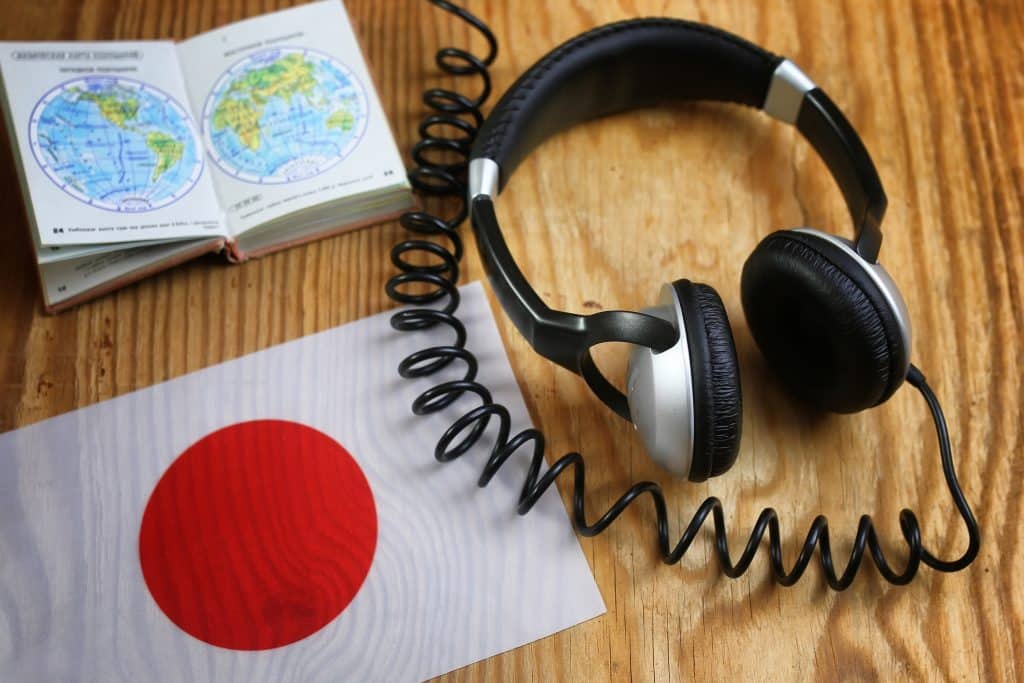
Contrasting Musical Strategies
Music plays a vital role in both Korean dramas and Japanese doramas, yet each uses it in ways that mirror its cultural style. Korean dramas often feature carefully crafted original soundtracks (OSTs). These songs are more than background music—they act as marketing tools, driving interest in a show even outside its home country. Breakout tracks sometimes become chart-toppers, helping to draw international fans and boost a drama’s popularity.
By contrast, Japanese doramas take a subtler approach. Their musical choices are usually less invasive, letting soundtracks sit quietly in the background. Soft instrumentals or understated pop songs underscore scenes without competing for attention. This style strengthens the dorama’s everyday, natural atmosphere, supporting the story without overshadowing it.
Emotional Reinforcement Through Sound
The way music is integrated also shapes the emotional experience. In K-dramas, powerful ballads or pop anthems often swell during climactic moments—heightening tension and making emotional peaks feel grand. Major characters sometimes even have recurring musical themes that become deeply associated with their story arcs.
Japanese doramas rely on consistency and subtlety. Their soundtracks are purposefully chosen to match the modesty of their narratives, so viewers are gently drawn into a scene’s feelings rather than being pushed. This restraint highlights ordinary moments and allows small emotions to take center stage.
Cultural Meanings of Music Integration
These musical approaches reveal cultural priorities. K-dramas’ visible, emotive soundtracks reflect a culture that values showmanship and memorable impact. Meanwhile, doramas’ quiet musicality reinforces an appreciation for subtlety and authenticity. Both methods demonstrate how music, even when understated, is central to storytelling and atmosphere.
With music setting the tone, another artistic layer comes into play: how characters appear, dress, and present themselves visually.
Fashion, Style, and Visual Identity
Fashion as Cultural Expression
K-Dramas are known for their bold, trend-driven looks. Characters often wear designer outfits and change styles frequently. Many viewers see K-Drama fashion as aspirational, and certain looks featured on-screen quickly become real-world trends. These shows often highlight luxury brands, statement accessories, and flawless grooming, creating a polished, dreamlike world.
Japanese doramas, in contrast, typically favor more understated, realistic fashion. Characters dress in ways that reflect ordinary Japanese life—school uniforms, work attire, or casual outfits. The intention is to reinforce relatability and authenticity, with styling choices that don’t draw excessive attention away from the story. While some doramas do feature stylish characters, the focus is on grounded, lived-in looks rather than aspirational glamour.
Visual Identity and Set Design
The difference in visual identity goes beyond clothing. K-Dramas use meticulously designed sets and sophisticated visuals to create striking, memorable scenes. Modern apartments, chic cafés, and scenic cityscapes are common backdrops. This style reflects a focus on visual appeal and emotional impact, making the viewer’s experience feel like an aesthetic journey.
Japanese doramas adopt a subtler approach to set and costume design. Familiar locations—small apartments, quiet streets, and humble homes—set the mood. These sets highlight simplicity and minimalism, consistent with cultural values that appreciate the beauty of everyday life.

Influence on Broader Trends
K-Dramas have consistently influenced regional and even global trends in fashion and beauty. Their outfits and accessories often become must-have items among fans, and brands collaborate with popular shows to reach new audiences. Doramas subtly reinforce contemporary Japanese fashion by showing how trends integrate into ordinary routines, offering viewers both inspiration and comfort.
Overall, both formats use fashion and visual design to express core cultural attitudes—either striving for perfection and aspiration, or celebrating simplicity and realism. This distinction shapes how each form resonates with audiences and furthers its cultural appeal.
Global Appeal and Cultural Export
International Success of K-Dramas
Korean dramas have surged in popularity worldwide, achieving a level of international success that sets them apart from Japanese doramas. Several factors drive this phenomenon. K-dramas often feature high production values, emotionally charged plots, and visually striking presentation. Streaming platforms have made these series more accessible to a global audience, and strategic subtitle support helps viewers engage easily. This combination makes K-dramas both relatable and aspirational for viewers from diverse backgrounds.
Meanwhile, Japanese doramas have a solid fan base but less global reach. Their realistic style and focus on everyday life resonate strongly within Japan and among niche international audiences. While doramas prioritize subtlety and understated narratives, these qualities can pose challenges for widespread international appeal, where viewers may seek more dramatic storytelling.
Vehicles for Soft Power and National Branding
Entertainment can shape a country’s image abroad. K-dramas have become pillars of South Korea’s soft power, presenting the nation as modern, stylish, and dynamic. This image extends through fashion, music, and even food featured in these shows. Government support and collaboration with entertainment companies further boost Korea’s cultural brand abroad.
Japanese doramas, in contrast, promote aspects of Japanese society such as humility, perseverance, and everyday kindness. While less overt as a soft power strategy, doramas nonetheless contribute to Japan’s cultural export, emphasizing unique societal values.
Unique Appeal for Global Audiences
Each format carries cultural signatures that appeal to audiences in distinct ways. K-dramas offer escapism and romance on a grand scale, while doramas bring comfort through relatable characters and thoughtful storytelling. These differences help both formats connect meaningfully with diverse viewers, encouraging exploration across cultures.

Conclusion: Appreciating the Unique Cultural Signatures
Recognizing Distinctive Storytelling Identities
Japanese doramas and Korean dramas each reflect the cultures from which they come, offering international viewers unique windows into everyday life and aspirational ideals. Doramas are marked by realism, everyday struggles, and quiet growth, highlighting Japan’s appreciation for subtlety and authenticity. In contrast, K-dramas draw audiences with high production values, romantic fantasy, and dynamic storytelling, capturing Korea’s focus on aspiration and global sophistication.
Cultural Reflection Through Entertainment
Both styles serve as more than entertainment—they act as cultural mirrors. The strong, polished visuals of K-dramas align with South Korea’s desire to showcase its modern image to the world, while Japanese doramas favor understated beauty and slice-of-life storytelling, echoing values of humility and introspection. Relationship dynamics, humor styles, and even music choices reveal the countries’ attitudes toward love, community, and emotional expression.
Embracing Diversity for Deeper Understanding
By exploring both doramas and K-dramas, viewers immerse themselves in the rich social landscapes of East Asia. Each format reveals its nation’s cultural strengths and challenges, from societal roles to the balance between tradition and innovation. Experiencing both styles not only entertains but also fosters greater appreciation and understanding of the cultural diversity that shapes these captivating dramas.
